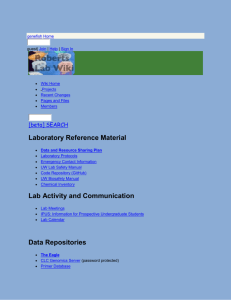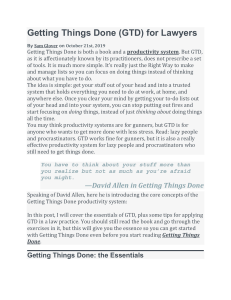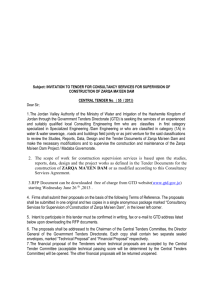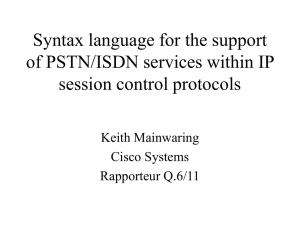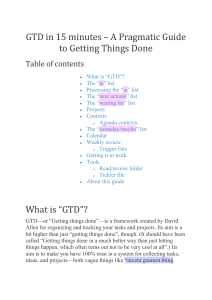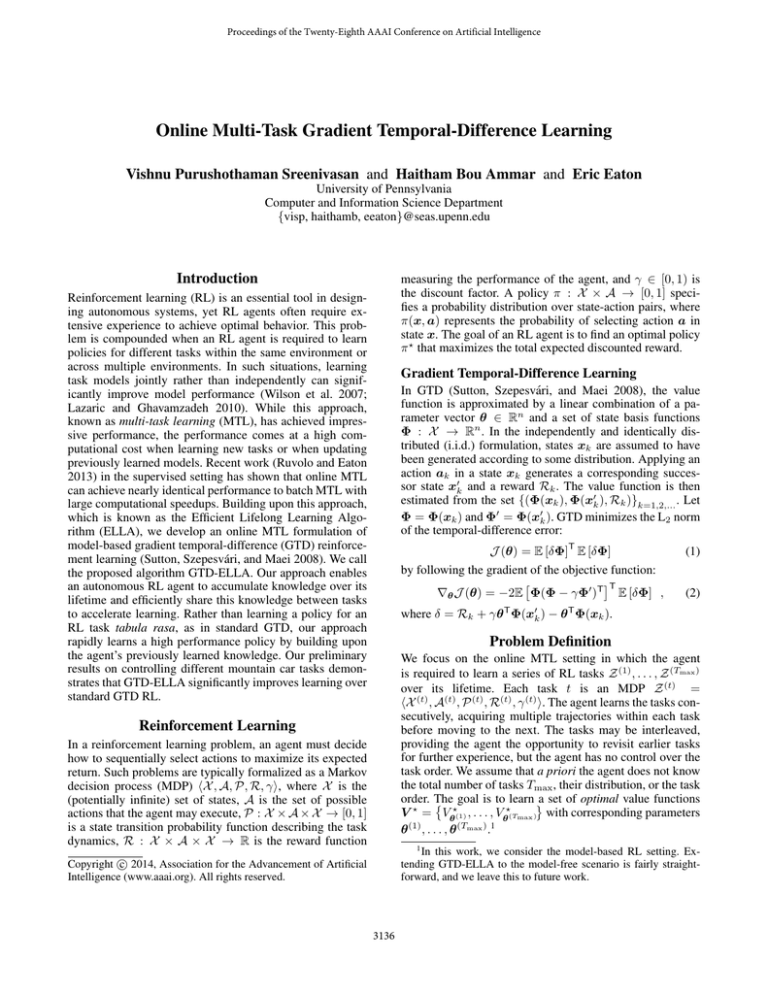
Proceedings of the Twenty-Eighth AAAI Conference on Artificial Intelligence
Online Multi-Task Gradient Temporal-Difference Learning
Vishnu Purushothaman Sreenivasan and Haitham Bou Ammar and Eric Eaton
University of Pennsylvania
Computer and Information Science Department
{visp, haithamb, eeaton}@seas.upenn.edu
Introduction
measuring the performance of the agent, and γ ∈ [0, 1) is
the discount factor. A policy π : X × A → [0, 1] specifies a probability distribution over state-action pairs, where
π(x, a) represents the probability of selecting action a in
state x. The goal of an RL agent is to find an optimal policy
π ? that maximizes the total expected discounted reward.
Reinforcement learning (RL) is an essential tool in designing autonomous systems, yet RL agents often require extensive experience to achieve optimal behavior. This problem is compounded when an RL agent is required to learn
policies for different tasks within the same environment or
across multiple environments. In such situations, learning
task models jointly rather than independently can significantly improve model performance (Wilson et al. 2007;
Lazaric and Ghavamzadeh 2010). While this approach,
known as multi-task learning (MTL), has achieved impressive performance, the performance comes at a high computational cost when learning new tasks or when updating
previously learned models. Recent work (Ruvolo and Eaton
2013) in the supervised setting has shown that online MTL
can achieve nearly identical performance to batch MTL with
large computational speedups. Building upon this approach,
which is known as the Efficient Lifelong Learning Algorithm (ELLA), we develop an online MTL formulation of
model-based gradient temporal-difference (GTD) reinforcement learning (Sutton, Szepesvári, and Maei 2008). We call
the proposed algorithm GTD-ELLA. Our approach enables
an autonomous RL agent to accumulate knowledge over its
lifetime and efficiently share this knowledge between tasks
to accelerate learning. Rather than learning a policy for an
RL task tabula rasa, as in standard GTD, our approach
rapidly learns a high performance policy by building upon
the agent’s previously learned knowledge. Our preliminary
results on controlling different mountain car tasks demonstrates that GTD-ELLA significantly improves learning over
standard GTD RL.
Gradient Temporal-Difference Learning
In GTD (Sutton, Szepesvári, and Maei 2008), the value
function is approximated by a linear combination of a parameter vector θ ∈ Rn and a set of state basis functions
Φ : X → Rn . In the independently and identically distributed (i.i.d.) formulation, states xk are assumed to have
been generated according to some distribution. Applying an
action ak in a state xk generates a corresponding successor state x0k and a reward Rk . The value function is then
estimated from the set {(Φ(xk ), Φ(x0k ), Rk )}k=1,2,... . Let
Φ = Φ(xk ) and Φ0 = Φ(x0k ). GTD minimizes the L2 norm
of the temporal-difference error:
T
J (θ) = E [δΦ] E [δΦ]
by following the gradient of the objective function:
T
∇θ J (θ) = −2E Φ(Φ − γΦ0 )T E [δΦ] ,
where δ = Rk + γθ
T
Φ(x0k )
(1)
(2)
T
− θ Φ(xk ).
Problem Definition
We focus on the online MTL setting in which the agent
is required to learn a series of RL tasks Z (1) , . . . , Z (Tmax )
over its lifetime. Each task t is an MDP Z (t) =
hX (t) , A(t) , P (t) , R(t) , γ (t) i. The agent learns the tasks consecutively, acquiring multiple trajectories within each task
before moving to the next. The tasks may be interleaved,
providing the agent the opportunity to revisit earlier tasks
for further experience, but the agent has no control over the
task order. We assume that a priori the agent does not know
the total number of tasks Tmax , their distribution, or the task
order. The
goal is to learn a set of optimal value functions
V ? = Vθ?(1) , . . . , Vθ?(Tmax ) with corresponding parameters
θ (1) , . . . , θ (Tmax ) .1
Reinforcement Learning
In a reinforcement learning problem, an agent must decide
how to sequentially select actions to maximize its expected
return. Such problems are typically formalized as a Markov
decision process (MDP) hX , A, P, R, γi, where X is the
(potentially infinite) set of states, A is the set of possible
actions that the agent may execute, P : X × A × X → [0, 1]
is a state transition probability function describing the task
dynamics, R : X × A × X → R is the reward function
1
In this work, we consider the model-based RL setting. Extending GTD-ELLA to the model-free scenario is fairly straightforward, and we leave this to future work.
c 2014, Association for the Advancement of Artificial
Copyright Intelligence (www.aaai.org). All rights reserved.
3136
Approach
Preliminary Results
Our approach maintains a library of k latent components
L ∈ Rd×k , which is shared among all tasks and forms a
basis for the task models. The parameter vectors can then be
represented as θ (t) = Ls(t) , where s(t) ∈ Rk are the coefficients over the basis L for task t. The s(t) ’s are encouraged
to be sparse to ensure that each basis component represents a
cohesive chunk of knowledge. Given T tasks, we can represent the MTL problem via the following objective function:
T
h
i
1X
eT (L) =
min J θ (t) + µs(t) 1 +λkLk2F , (3)
T t=1 s(t)
We evaluated GTD-ELLA on multiple tasks from the mountain car (MC) domain. In MC, the state is given by the position and the velocity of the car, which was represented by 6
radial basis functions that were linearly spaced across both
dimensions. The position was bounded between −1.2 and
0.6, while the velocity was bounded between −0.07 and
0.07. Rewards of −1 were given in all states, with exception of the goal which gave a reward of 0. We generated 75
tasks by randomizing the valley’s slope, resulting in a shift
in the valley’s position. These shifts were critical to ensure
that the optimal solution for one task is suboptimal in another. We trained GTD-ELLA on different numbers of tasks
to learn L, observing either 10, 30, or 50 tasks to learn the latent bases. Evaluation was then conducted on 25 unobserved
MC tasks using either GTD-ELLA or standard GTD(0).
where the L1 norm of s(t) is used to approximate the true
vector sparsity. Solving Equation 3 is computationally expensive due to two inefficiencies: a) the explicit dependence
of Equation 3 on all available trajectories, and b) the exhaustive evaluation of a single candidate L that requires the
optimization of all s(t) ’s.
4
Standard GTD
GTD−ELLA, 10 tasks observed
GTD−ELLA, 30 tasks observed
GTD−ELLA, 50 tasks observed
−3
12
x 10
3.5
11
3
+ λ||L||2F ,
where
α(t) = arg min J θ (t)
Γ(t) = ∇θ(t), θ(t) J θ (t) .
θ
Solving arg minθ J θ (t) is typically difficult in RL settings, requiring a substantial amount of experience. We
remedy this problem by following the gradient of J θ (t) . Crucially, we have removed the dependence of the optimization
on all trajectories.
Eliminating the Reoptimization of Other Tasks
The second inefficiency arises from the need to reoptimize
all learned models by recomputing the s(t) ’s when learning
each new task. We modify Equation 3 to eliminate this minimization over all s(t) ’s by optimizing each task-specific projection only when training on task t, without updating them
when training on other tasks. This leads to the following update equations for learning the model for each new task t,
which approximates the result of Equation 3:
s(t) ← arg min l Lm , s(t), α(t), Γ(t)
(4)
s(t)
T
1X l L, s(t), α(t), Γ(t) + λkLk2F (5)
L T
t=1
(t)
(t)
where l L, s , α , Γ(t) = µ||s||1 + ||α − Ls||2Γ and
Lm corresponds to the value of the latent basis at the mth
iteration. This formulation can be solved efficiently (Ruvolo
and Eaton 2013), and together, Equations 4 and 5 constitute
the core of GTD-ELLA.
Lm+1 ← arg min
Average Loss
As in ELLA, to eliminate the inefficiency related to the dependence on all available trajectories, we approximate Equation 3 by
performing a second-order Taylor expansion of
J θ (t) around the optimal single-task solution α(t) :
(
)
T
(t)
(t) 1X
(t) 2
êT (L) =
min α − Ls
+µ s
Γ(t)
1
T t=1 s(t)
Average Loss
Eliminating Dependence On All Trajectories
10
9
z 8
7
6
GTD−ELLA, 10 tasks observed
GTD−ELLA, 30 tasks observed
GTD−ELLA, 50 tasks observed
5
4
0
1000
2000
3000
4000
Iterations
5000
6000
2.5
2
1.5
1
0.5
0
0
1000
2000
3000
4000
Iterations
5000
6000
Figure 1: Comparison of GTD-ELLA versus standard
GTD(0), showing that GTD-ELLA attains significantly
lower average loss over 25 test tasks. The left graph zooms
in on the cluttered region of the graph on the right.
Figure 1 shows that GTD-ELLA significantly improves
RL performance when training on new tasks. Further, as the
agent learns more tasks, its overall performance improves.
Although successful, this work is still in progress. In the future, we plan to extend the approach to model-free RL, as
well as allow for more differences between the tasks.
Acknowledgements
This work was partially supported by ONR grant #N0001411-1-0139 and AFOSR grant #FA8750-14-1-0069.
References
Lazaric, A., and Ghavamzadeh, M. 2010. Bayesian multitask reinforcement learning. In Proceedings of the 27th International Conference on Machine Learning, 599–606.
Ruvolo, P., and Eaton, E. 2013. ELLA: An efficient lifelong
learning algorithm. In Proceedings of the 30th International
Conference on Machine Learning, 507–515.
Sutton, R. S.; Szepesvári, C.; and Maei, H. R. 2008. A convergent O(n) algorithm for off-policy temporal-difference
learning with linear function approximation. In Neural Information Processing Systems 21, 1609–1616.
Wilson, A.; Fern, A.; Ray, S.; and Tadepalli, P. 2007. Multitask reinforcement learning: A hierarchical Bayesian approach. In Proceedings of the 24th International Conference
on Machine Learning, 1015–1022.

